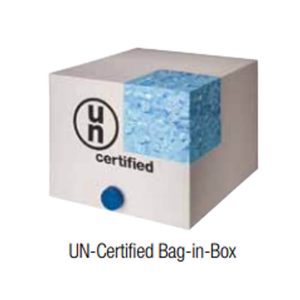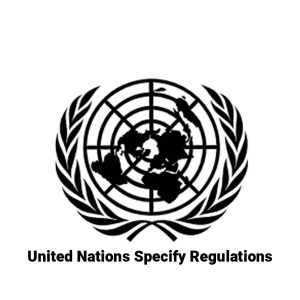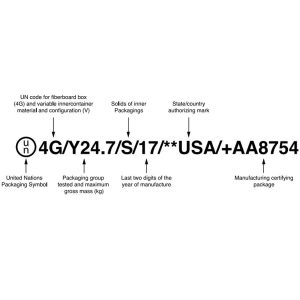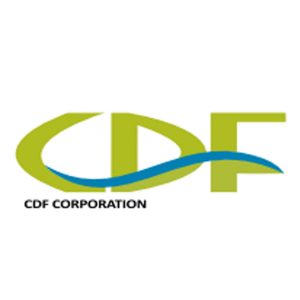Bag-in-Box Performance
Benefits, Sustainability Impact,
Certification Criteria
The Best Option for Flexible Bag-in-Box Packaging?
It’s in the Bag.
 Bag-in-box packaging is a flexible package—with an inner receptacle and an outer package. UN-certified bag-in-box packaging provides options for various industries when transporting goods requiring certification that meets United Nations (UN) standards. Items to be transported can range from food, beverage, cosmetic, and chemical—which is what is addressed in the UN certification standards as dangerous goods.
Bag-in-box packaging is a flexible package—with an inner receptacle and an outer package. UN-certified bag-in-box packaging provides options for various industries when transporting goods requiring certification that meets United Nations (UN) standards. Items to be transported can range from food, beverage, cosmetic, and chemical—which is what is addressed in the UN certification standards as dangerous goods.
Typical verticals that depend on the UN-certified bag-in-box for packaging include:
• Chemical: adhesives, agricultural, automotive, oils, chemicals, coatings, detergents, inks, lubricants, paints, petroleum
• Cosmetic: cleansers, conditioner, cream, liquid, makeup, lotion, shampoo, tanning spray
• Food & Beverage: flavorings, purees, sauces, vinegar, beverage base, coffee, dairy, juice, lemonade, tea, water
• Medical
Bag-in-Box Performance Benefits
• Replaces many rigid packages—uses, significantly less plastic, and on average, costs notably less than a similar capacity rigid, container, including cube-shaped inserts and containers, cans, and plastic pails.
• Utilizes manual, semi-automatic, and fully, automatic fill lines for form-fit bags.
• Dispenses without surging or glugging.
• Collapses easily to a virtually flat bag and box, minimizing shipping and warehouse\space requirements.
• It provides excellent quality and storage security against leakage with superior seam strength.
• Fills without air, eliminating foaming and splashing.
Sustainability Impact
As consumers and companies expand their commitment to sustainable practices, the demand for eco-friendly packaging continues to rise. Bag-in-box packaging has many environmentally responsible qualities.
 • Bag-in-box uses significantly less plastic than rigid containers—80% less plastic.
• Bag-in-box uses significantly less plastic than rigid containers—80% less plastic.
• Bag-in-box usually can be evacuated more completely than rigid containers, especially with viscous ingredients. This has the advantage of not wasting the feed, water, or other resources that were used to produce the residual product.
• Decreased product waste through filling, breakage potential, dispensing, and shelf life.
• Bag-in-box is lighter, takes up less space, and is easier to transport, saving fuel (and costs). With bag-in-box, there is no return trip with empty containers.
• It is recyclable: contributes 91% less material to landfills than rigid pails.
• Plastic liners contain fewer raw materials than many of their rigid or semi-rigid counterparts.
• Eliminates internal cleaning associated with alternative rigid packaging—reducing water usage, cleaning solvents, and costs.
• Flexible plastics offer cutting-edge protection. They can contain chemicals safely with fewer materials. They also improve product safety, protecting spoilable from external contaminants for longer shelf life.
• Energy consumption at all stages of manufacture, use, and disposal are less as compared to rigid containers, which means decreased carbon emissions during packaging manufacture, product filling, transportation, recycling, etc.
– Uses 20% less energy to produce than rigid pails.
– CO2 emissions during transportation are decreased by 50% compared to competitive rigid containers.
– Rectangular shape minimizes dead space by a 3:1 ratio, allowing more product per pallet.
– Maximizes shipping capacity: 1 full truckload of bag-in-box is equivalent to 10 truckloads of rigid pails.
– According to the Flexible Packaging Association, flexible materials produce 75% fewer carbon emissions than the next closest packaging option.
Why Does the United Nations Specify Regulations for Packaging?
Every country might have its own internal governance over packaging, which could lead to conflicts with type and efficacy of packaging, and markings and labeling—all of which may compromise people handling dangerous goods, the end-users, the goods themselves, and the environment. As such, the United Nations has set standards for the classification, packaging, marking, and labeling of dangerous goods, which cover road, rail, and sea. These are carefully calibrated to encompass the standards of major countries and international organizations, like the United States and the European Union. All packaging to be used for dangerous goods—domestically and internationally—must be tested to these standards and pass a certification process administered by a third party.
It is important to note that the UN does not actually, actively certify the packaging; the UN is the body that has established the regulatory standards for the packaging that transports dangerous goods. Packaging that bares the certification is referred to in various ways. Some common references include:

- UN certified
- UN approved
- UN specified
- POP (performance-oriented)
- Dangerous goods packaging
- Hazmat packaging
The United States Code of Federal Regulations (CFR), “CFR Title 49 – Transportation” spells out the administrative law governing transportation. These rules cover regulations and security and safety oversight on handling and transporting hazardous materials, with a focus on packaging. The regulation is vast in its coverage, but when applied to an end-user product, the main concerns addressed center around safety and functionality.
UN Certification Standards
To maintain conformity, predictability, safety, and security standards, materials that are shipped domestically and internationally must all meet the same standards. Packaging that is UN certified
meets all transport regulations for the packing and shipping of dangerous goods—though UN certified packaging can be used for all materials, whether hazardous or not. This stands true whether the contents are food and beverage, cosmetic, or chemical in nature.
Most food products are not considered hazardous materials, but there are exceptions. For instance, bulk powdered products can present a risk of explosion, especially when the material is of high electrical resistance (which allows static electricity to build up). Certain types of edible oils can catch fire if exposed to high temperatures. Even without the question of hazards, meeting UN specifications can help assure end-users of bulk products, such as food manufacturers, of a package’s strength and integrity. The standard ensures that dangerous goods, when shipped under normal transportation conditions, are safely contained.
The UN Packaging Code
There is a very specific code that identifies UN-certified packaging, which is clearly indicated on the outside of the package. The code also informs what the type and quantity of dangerous good is. This is an example of a UN marking on a certified package:

There are package code ratings that indicate the minimum requirement for how the packaging can be used:
X – PG I, II, III | Y – PG II, III | Z – PG III
UN numbers for packages carrying hazardous material are assigned by certification agencies duly authorized by the United Nations, which apply tests described in Chapter 6.1 of the UN Model Regulations. Individual nations have differing standards for how long they will accept a UN number.
Bag-in-box packaging is classified as UN combination packaging (as opposed to single UN packaging). Bag-in-box packaging consists of an inner receptacle and outer packaging. The entire
“unit” is tested and certified as one, though the certification symbol is designated on the outer package. Important to note here that the integrity of the original package assembly must remain in place for the certification to remain valid.
The ultimate responsibility for safety lies with the shipper. The first rule of thumb is to follow the packing instructions correctly. Failure to do so can compromise the integrity of the UN certification and have adverse effects on the functionality of the packaging. The packing instructions will also help determine whether the packaging you choose has any restrictions regarding mode of transportation. Another vital detail to address is to ensure that the goods are compatible with the packaging materials. Consequences such as degradation, corrosion, permeation, leakage, and injury to humans, along with contamination of the environment and of the liquids being transported are all possible when the wrong chemicals mix.
Ensuring Safety in Design
The stakes can run high, so much development and design goes into creating UN-certified packaging. When applying for UN certification, the package must meet the design qualification. This includes disclosing all drawings, dimensions, materials, weights, intended uses, etc. regarding the packaging. Given the dimensions of the products, the testing criteria is calculated to determine adequate testing parameters, such as minimum drop heights for product-specific gravities, and minimum load for stacking. If a design-type passes the certification, subsequent packaging with the
same specifications may be regarded as meeting the certification requirements.
The final design and usage must incorporate the requirements from three regulatory agencies:
49 CDR: United States Department of Transportation (DOT) Code of Federal Regulations Title 49, Transportation, Parts 100-185 (CDF’s UN-certified bag-in-box passed the DOT’s Title 49 CFR;
Performance Oriented Packaging Standards, Section 178. This package is also certified under IMDG and the UN Recommendations on the Transport of Dangerous Goods.)UN: United Nations Recommendations of the Transport of Dangerous Goods–Model Regulations
IMDG: International Maritime Dangerous Good Code
UN-Certified Testing Requirements
Generally, the manufacturer/shipper of hazardous materials is responsible for transporting them safely. However, in most cases, manufacturers will assign their bulk packaging suppliers the
responsibility of conducting the tests required to get a UN license and shipping number.
To receive its final UN certification, each product must undergo rigorous testing criteria. General testing criteria include:
• Four tests that are designed to challenge the integrity of the packaging in stressful environments and conditions.
• When testing, water is the liquid that is used in packaging with inner receptacles (such as bag-in-box containers).
• In general, there are at least three identical package samples tested for each test (more for the drop and Cobb tests).
• All inspections, measuring, and test equipment that can affect product quality is calibrated and adjusted at prescribed intervals, or prior to use, and is traceable to National Institute of Standards and Technology (NIST), using American National Standards Institute (ANSI) Z540 as an overall guide for calibration certification.
• Testing is completed by an independent DOT UN third-party certification agency.
The four tests are:
Drop >> Stacking >> Vibration (for 49 CFR only) >> Cobb
The Testing
Drop Test
This is the standard test that drops loaded containers by free fall. Packages are dropped on all sides:
on the bottom, top, the long and short sides, and in the top and bottom corners. Side and corner drops are conducted to assess the impact at the manufacturer’s joint of the box. Any leakages or
deformations are noted (and assessed for potential risks). This test meets American Society for Testing Materials (ASTM) D5276, ASTM D7790, and International Organization for Standardization
(ISO) 2248 industry standards.
Drop test criteria cover:
• Packaging that contains liquid; each package does not leak.
• There can be no damage to the outer packaging likely to adversely affect safety during transport. Inner receptacles, inner packaging, or articles must remain completely within the outer packaging and there must be no leakage of the filling substance form the inner packaging.
• Any discharge from a closure is slight and ceases immediately after impact with no further leakage.
• No rupture is permitted in packagings for materials in Class 1 which would permit spillage of loose explosive substances or articles from the outer packaging.
2) Stacking Test
The standard method tests for compression resistance of a container under a constant load. Packaged are stacked for 24 hours and dead load weight is applied to assess whether, under the
stress of weight, the packaging can withstand any leakage and damage. Guided load tests require an additional “stacking stability” test. This test meets ASTM D4577 and ISO 2234 industry standards.
Stacking test criteria cover:
• There must be no leakage of the filling substance from the inner receptacle, or inner packaging.
• There can be no deterioration that could adversely affect transport safety or any distortion liable to reduce the package’s strength, cause instability in stacks of packages, or cause damage to inner
packagings that is likely to reduce safety in transport.
3) Vibration Test
This is the standard method for vibration testing of shipping containers. Packages are placed on the platform of an L.A.B. 6000 transportation simulator for one hour that vibrates at a fixed, low frequency of 4.1 Hz. This test meets ASTM D999 and ISO 2247 industry standards.
Vibration test criteria:
• Immediately following the period of vibration, each package must be removed from the platform, turned on its side, and observed for any evidence of leakage.
• A packaging passes the vibration test if there is no rupture or leakage from any of the packages.
• No test samples should show any deterioration which could adversely affect transportation safety or any distortion liable to reduce packaging strength.
4) Cobb Water Absorption Test
The Cobb test determines the water absorptivity of paper, cardboard, and corrugated cardboard. Five samples of packaging material (5” x 5” per piece) are weighed dry, then placed on the Cobb
tester. A sealed vertical cylinder is placed on the product, which rests on a rubber mat supported on a steel plate. Approximately 100ml of water is poured into the cylinder, then poured out after
30 minutes. Using blotter paper, excess water is removed from the testing material, which is then weighed again while wet. This test meets ISO 535 industry standards.
Cobb test criteria:
• An increase in mass greater than 155g/m2 over the 30-minute duration represents an
unacceptable level of water resistance.
CDF-Specific UN-Certified Bag-in-Box Packaging
CDF’s UN-certified bag-in-box meets all UN requirements and is certified by a third-party lab following the Department of Transportation guidelines. It is available in a 20-liter size and provides the highest levels of protection for transporting hazardous products requiring class II and III packaging. The CDF UN-certified bag-in-box design requirements endure the four rigorous performance tests noted above: drop, stacking, vibration, and cobb water absorption.
CDF UN-Certified Bag-in-Box Product Specifications
• Meets UN standards as certified by an independent DOT UN third-party certification agency.
• Provides the highest levels of protection for transporting hazardous products requiring class II and III packaging.
• Adheres to Safe Quality Food (SQF) standards and certification: SQF Level 2 Certified with active HACCP plans.
– Film is compliant with FDA regulations
– No allergens are used in our process
– Food safety culture with 30 quality and food safety programs in place
• Has compliance with all applicable local, state, and federal regulations, including21CFR110 (GMP).
• Possesses CDF1 Smart Seal Technology, and is manufactured in a clean environment, using state-of-the-art equipment and quality control standards of the highest caliber to ensure ultimate reliability.
– Proprietary CDF1 Smart Seal Technology optimizes precision and consistency through monitoring the temperature, time, and pressure of every seal on every liner.
– A critical aspect of CDF Smart Seal Technology is the SCADA software that allows CDF to monitor, measure, and store data on every seal of every bag we make. This system allows us to completely verify and validate every bag made at the time of manufacture, or anytime later, by recalling any of the machine conditions that contributed to the building of the liner.
– In-process tests include:
> Tensile and elongation test
> Hydrostatic fitment test
> Leak test
> Dimensional compliance
> 100% visual inspection to verify product performance
Specifications (continued)
• Features the Cheertainer® inner receptacle, which is a closed container prior to filling by having the fitment in the dust cap position; this closed container lessens the chance of contamination.
• Utilizes manual, semi-automatic, and fully automatic fill lines for form-fit bags.
• Comes in a 10- and 20-liter size; fiberboard box outer with form-fit inner receptacle.
Adherence to the packaging instructions ensures complete compliance and maximum safety.
CDF meets ISO 9001:2008 requirements.
About CDF Corporation
CDF Corporation is a privately held international company that specializes in the manufacture and sale of high-quality pail, drum, intermediate bulk container, and bag-in-box liners and flexible
packaging. CDF manufactures products ranging in sizes from 2 ounces to 330 gallons in its Plymouth, Massachusetts ISOcertified facility. CDF’s unique products satisfy a variety of markets and applications, including the food and beverage, chemical, and cosmetic industries. 
